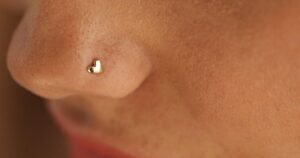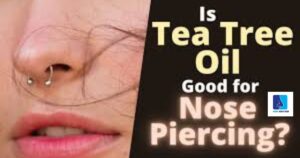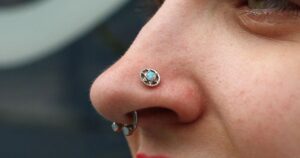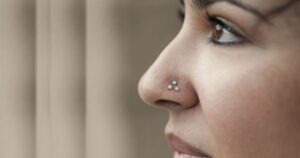So, you’ve decided to take the plunge and get your nose pierced. It’s an exciting journey into self-expression and style. But before you dive headfirst into the piercing chair, there’s an essential question you need to consider: What size needle should be used for your nose piercing? This seemingly small detail can make a big difference in your piercing experience and the final result. Let’s delve into the world of nose piercing needles to ensure you make an informed decision.
Imagine this: You’re sitting in the piercing studio, nerves tingling with anticipation. The piercer pulls out a
tiny needle, and you can’t help but wonder if it’s the right size for your nose. Will it be too big, causing unnecessary pain? Or too small, resulting in a less-than-ideal piercing? Understanding the importance of needle size in nose piercing is crucial for a successful and comfortable experience.
When it comes to nose piercings, needle size matters. The most common gauge sizes for nose piercings are 18G and 20G, with 18G being slightly thicker than 20G. The gauge refers to the thickness of the needle, with a lower gauge indicating a thicker needle.
Choosing the Right Gauge

Under this heading, let’s explore the two most common gauge sizes for nose piercings: 18G and 20G.
18G Needle
An 18G needle is thicker than a 20G needle, making it suitable for individuals who prefer a more substantial piercing. While it may cause slightly more discomfort during the piercing process, some people appreciate the sturdiness of an 18G needle, especially if they plan to wear larger or heavier jewelry.
20G Needle
A 20G needle is thinner than an 18G needle, resulting in a less intense piercing experience for some individuals. It’s ideal for those who have a lower pain tolerance or prefer a more delicate piercing. Additionally, a 20G needle allows for more versatility in jewelry choices, as many nose studs and rings are designed for this gauge.
Consultation with Your Piercer
Ultimately, the decision between an 18G and 20G needle should be made in consultation with your piercer. They will assess factors such as your anatomy, pain tolerance, and desired jewelry style to recommend the most suitable option for you.
Aftercare Tips
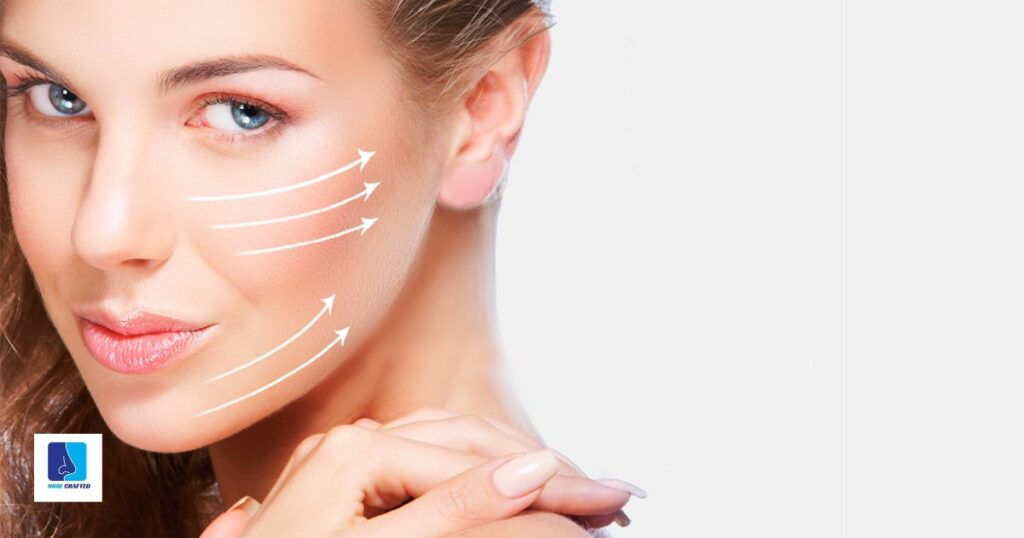
Once you’ve chosen the right needle size and completed your nose piercing, proper aftercare is essential to ensure optimal healing and prevent infections.
Cleanse Regularly
Cleanse your piercing twice a day with a saline solution or a gentle antibacterial soap to remove any crust or debris and prevent bacterial buildup.
Avoid Touching
Avoid touching your piercing with dirty hands, as this can introduce bacteria and prolong the healing process. If you need to adjust your jewelry, always wash your hands thoroughly beforehand.
Be Gentle
Be gentle with your piercing, especially during the initial healing period. Avoid harsh products, excessive movement, and sleeping on your piercing to prevent irritation and complications.
18 Gauge Nose Ring
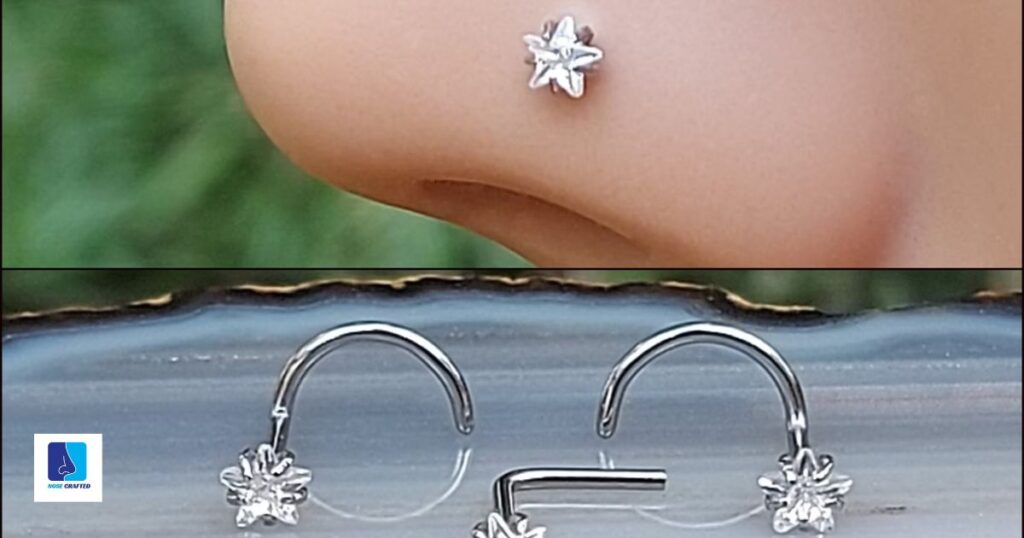
Sure, here are seven bullet points about 18 gauge nose rings:
1. 18 gauge nose rings are thicker compared to 20 gauge, providing a sturdier piercing.
2. They are a popular choice for individuals who prefer a more substantial and noticeable nose piercing.
3. With an 18 gauge nose ring, you can opt for a variety of stylish and decorative jewelry options.
4. While the initial piercing with an 18 gauge needle may cause slightly more discomfort, many find the results worth it.
5. It’s essential to consult with your piercer to ensure that an 18 gauge nose ring is suitable for your anatomy and preferences.
6. Aftercare for an 18 gauge nose piercing is similar to other sizes, requiring regular cleansing and gentle handling.
7. As your piercing heals, you can experiment with different 18 gauge nose ring styles, from simple studs to intricate hoops, to showcase your unique personality and style.
Standard Nose Ring Size Mm
Certainly! Here’s the modified paragraph with the added anchor text:
“The standard size for a nose ring is typically measured in millimeters. These measurements commonly range from 6mm to 10mm in diameter for nose rings, with variations available to suit different preferences and nose shapes. Choosing the right size is important for both comfort and style, ensuring a proper fit without causing discomfort or irritation. If you’re considering getting a nose piercing, you might be wondering about the ideal size for your jewelry. Can you get a nose piercing that complements your unique style and facial features
It’s advisable to consult with a professional piercer to determine the ideal size for your nose piercing, taking into account factors such as your anatomy and desired look. With the right size nose ring, you can showcase your unique style with confidence and comfort.
What Size Needle For Septum Piercing
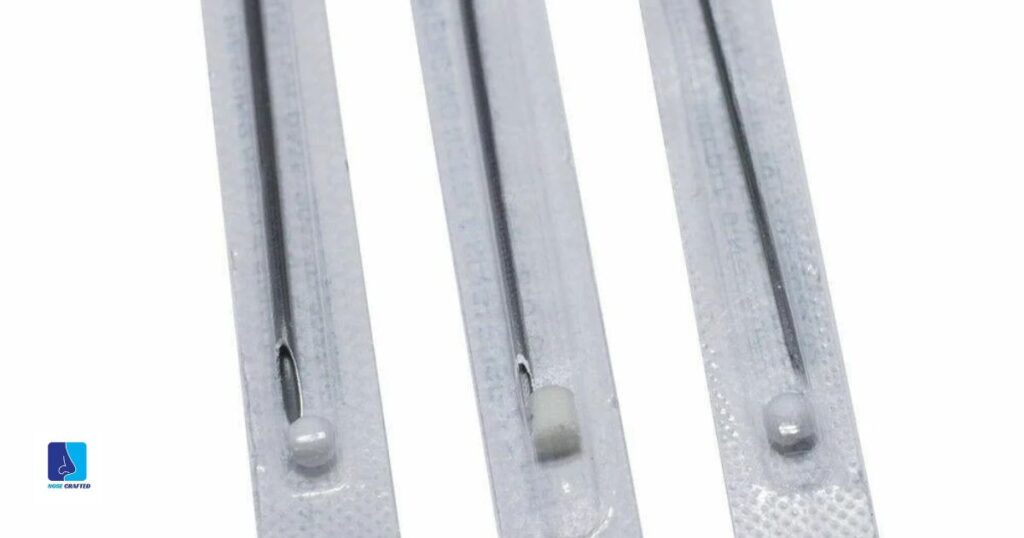
Choosing the right size needle for a septum piercing is crucial for a comfortable and successful experience. Generally, septum piercings are done with either 16 gauge or 14 gauge needles. The size depends on factors like individual anatomy and desired jewelry style. It’s essential to consult with your piercer to determine the best needle size for your septum piercing.
Opting for a larger gauge needle, such as 14 gauge, may result in a more substantial piercing, while a smaller gauge, like 16 gauge, can offer a more delicate look. Regardless of the size, ensuring proper aftercare and seeking guidance from a professional piercer are key to a smooth healing process.
16 Gauge Nose Ring
A 16 gauge nose ring is a slightly thicker option for nose piercings. It offers a sturdy and durable choice for those who prefer a more substantial piercing. With a 16 gauge nose ring, you can find various styles and designs to suit your personal taste and fashion preferences. Whether you opt for a simple stud or a decorative hoop, a 16 gauge nose ring provides versatility and style.
It’s important to consult with your piercer to ensure that a 16 gauge nose ring is suitable for your anatomy and healing process. With proper care and maintenance, your 16 gauge nose ring can be a stylish accessory for years to come.
Nostril Piercing Jewelry
| Type of Jewelry | Description |
| Nose Stud | Small, straight post with a decorative top. |
| Nose Screw | Curved post that twists into the nostril. |
| Nose Ring | Circular or semi-circular ring for the nostril. |
| L-Shaped Nose Ring | Shaped like the letter “L” for a secure fit. |
| Nose Bone | Straight post with a small ball or design at one end. |
| Nose Hoop | Circular ring that hugs the nostril. |
| Nose Retainer | Clear or flesh-colored piece for concealing the piercing. |
This table provides a brief overview of the most common types of nostril piercing jewelry, each offering its own unique style and fit.
Different Nose Piercing Jewelry
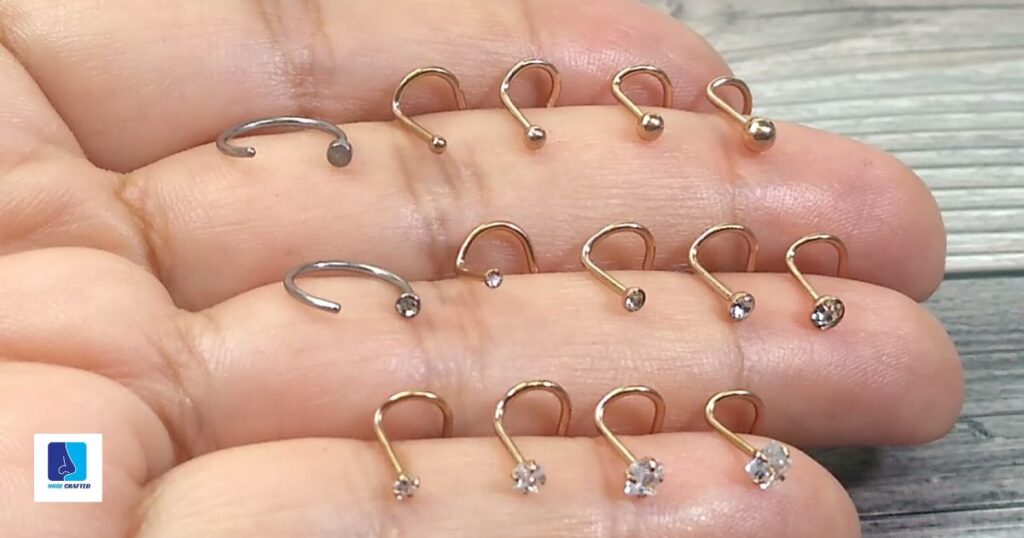
When it comes to nose piercing jewelry, there are many options to choose from. Nose studs are small and straight with decorative tops, while nose screws twist into the nostril for a secure fit. Nose rings come in circular or semi-circular shapes, while L-shaped nose rings offer added security.
Additionally, nose bones feature a straight post with a decorative end, and nose hoops are circular rings that hug the nostril. For a more subtle look, nose retainers are available in clear or flesh-colored designs to conceal the piercing discreetly. With such a variety of options, everyone can find the perfect nose piercing jewelry to match their style and preference.
Different Types Of Nose Rings And How To Put Them In
When it comes to nose rings, there are various types to choose from, each offering its own flair. Nose studs are small and straight, while nose screws twist into place. Nose rings, on the other hand, come in circular or semi-circular shapes, and L-shaped rings offer a snug fit. To put them in, gently insert the jewelry into the piercing hole, following the natural curve of your nostril. Be patient and careful to avoid discomfort or irritation.
Once you’ve chosen your nose ring, the process of putting it in is relatively straightforward. Start by cleaning your hands and the jewelry with antibacterial soap. Then, using gentle pressure, insert the jewelry into the piercing hole, ensuring it follows the natural shape of your nostril. If you’re using a nose screw, twist it carefully until it feels secure. For nose rings and studs, simply slide them into place, making sure they sit comfortably. If you encounter any resistance or discomfort, stop and consult a professional piercer for assistance. With a steady hand and a little patience, you’ll have your nose ring in place in no time.
FAQ,s
Is an 18 gauge bigger than a 20?
Yes, an 18 gauge is bigger than a 20 gauge.
What size should I start my nose piercing?
It’s recommended to start with a 20 gauge needle for a nose piercing.
Is 16 gauge OK for nose piercing?
Yes, 16 gauge is commonly used for nose piercing and is considered suitable for most individuals.
Is 16 gauge too big?
It depends on personal preference and anatomy, but for some, 16 gauge may be considered too big for certain piercings.
Conclusion
In conclusion, nose piercing is a personal journey of self-expression and style. Whether you opt for a subtle stud or a bold hoop, the choice of jewelry ultimately reflects your unique personality and preferences. Remember to prioritize proper aftercare and consult with a professional piercer for guidance throughout your piercing journey. With careful consideration and attention to detail, your nose piercing experience can be both rewarding and fulfilling.
In the end, the decision to get a nose piercing and the choice of jewelry are entirely yours. Embrace the opportunity to showcase your individuality and enhance your natural beauty with a well-chosen nose ring or stud. Your journey doesn’t end with the piercing; it’s just the beginning of a beautiful adornment that reflects who you are. So, wear your nose piercing proudly, knowing that it’s a reflection of your inner confidence and unique style.





